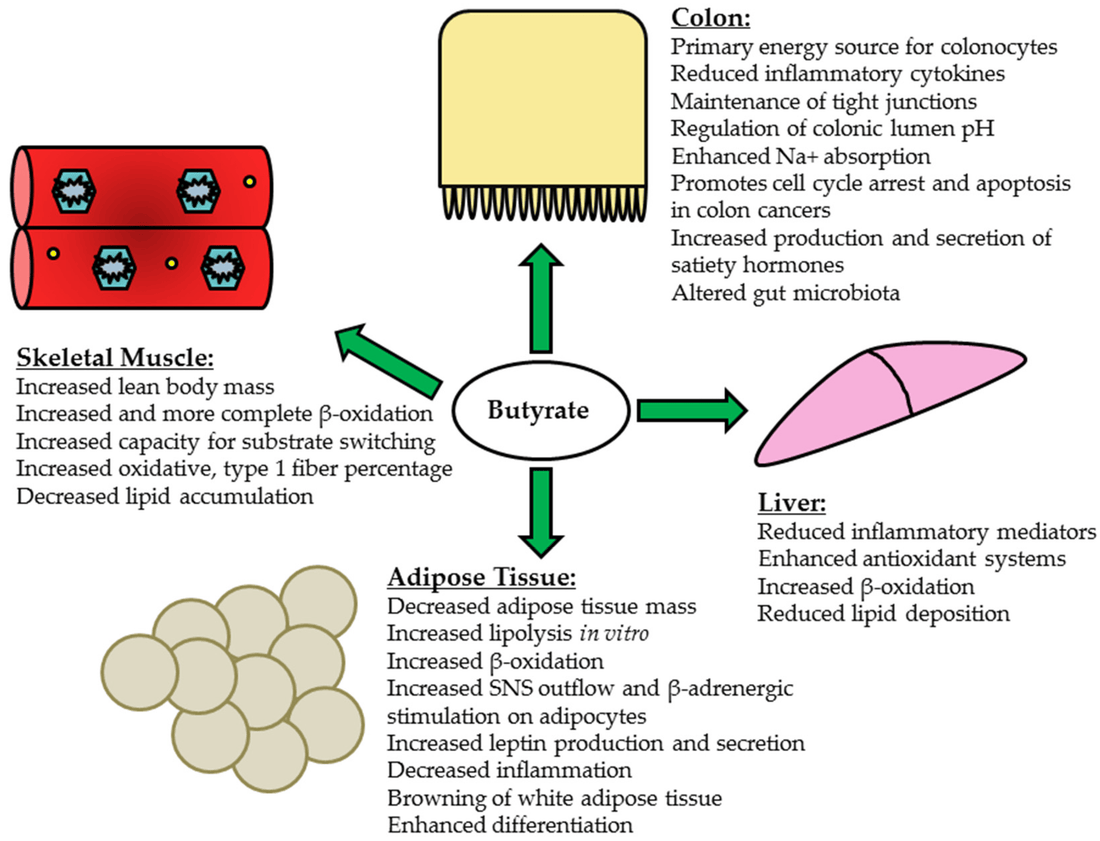Short-chain fatty acids (SCFAs) are primarily metabolites of dietary fiber and protein in the gut, but they can also be produced by bacteria on the skin and in the vagina. Dietary fibers, classified as soluble (e.g., pectins, inulin) and insoluble (e.g., resistant starches), are the main sources of SCFAs, which include acetate, propionate, butyrate, pentanoate, and malonate. Acetate, propionate, and butyrate make up 90% of the SCFAs produced by gut microbiota.
SCFAs are mainly produced in the cecum and proximal colon, with concentrations decreasing towards the distal colon as substrates are depleted. Factors influencing SCFA production include substrate source, gut microbiota composition, colonic pH, gut transit time, and fermentation site. For example, resistant starch 5 produces more butyric acid than other forms of resistant starch, and low colonic pH promotes butyrate production and increases butyrate-producing bacteria populations. Host physiology, including intestinal environment, microbe-host interactions, and social stress, also affects SCFA production. Stress, for instance, can reduce colonic SCFAs by altering gut microbiota composition.
More than 90% of SCFAs are absorbed from the intestinal cavity and metabolized by colonocytes or the liver. Butyrate serves as an important energy source for colonocytes, while other SCFAs like acetate and propionate are transported to the liver via the portal vein for metabolism. The liver metabolizes approximately 40% of acetate and 80% of propionate from the portal vein. A small portion of SCFAs in the rectum bypasses the liver and enters systemic circulation directly via the internal iliac vein.
